2010 Polaris 600 LX Review
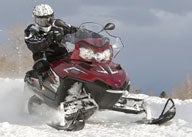
Stretch track Polaris 600 LX can rack up big mileage days
It’s really our problem and not Polaris. But because we enjoy the nimble handling and lightweight “feel” of the Ski-Doo MXZ-XP chassis so much, we get surprised when Ski-Doo’s competition hits a home run to the opposite field. That’s precisely the case with the 2010 Polaris 600 LX.
This past March we grabbed rides on both the latest Ski-Doo GSX 600 E-TEC luxury trail sport and Polaris 600 LX. Admittedly these sleds are not direct competitors as the LX comes with a stretch chassis and really is more akin to some combination of a cross between Ski-Doo’s Renegade and its GSX models. What we have with the Polaris 600 LX is a pleasant trail sled with multiple personalities.
Luxo-Cruiser
First, as the designation “LX” implies, the 2010 Polaris 600 LX provides exceptional on-trail amenities. Any one riding in below-zero temperatures will appreciate the handsome, yet extremely effective Polaris windshield. Unlike previous designs from this northwestern Minnesota snowmobile manufacturer, this wind blocker is as attractive as it is efficient. The top lip busts up the wind, throwing it over your helmet, while side deflectors move chilled air away from your hands.
Many trail sleds define “luxury” appointments to mean some semblance of rearview mirror. The LX shares that definition, but the translation is vastly improved over some past efforts that caught our rearward glances. We have seen rearview mirrors attached to such huge, gyrating windscreens that the only discernible rearview action you could ascertain was a dancing light parade across the mirrored finish. You know, that works for acknowledging the presence of a sled behind you, but it’s not useful for anything more. The 600 LX has solidly mounted mirrors affixed to its handlebar, inside of your hands on either side. Even though they are firmly mounted, we expected some image bounce, but were pleasantly surprised to note these sled mirrors work better than most motorcycle mirrors we’ve encountered over the years.
You’ll also note that the Polaris LX handlebar ends allow you to manipulate all of the key controls. The gray slide buttons adjust handgrip and thumb warmers. The big blue button switches the lights from high to low beam. A small yellow button engages the electronic reverse and the green toggle switch lets you work the multi-function display centered in the instrument pod.
Basic IQ
While these rider-friendly amenities make up the luxury packaging, it is the basic underpinnings that made this sled a most pleasant surprise. Over the past few seasons, Polaris engineers have worked diligently to evolve the IQ chassis and suspensions into some of the best in the business. Aluminum construction in the tunnel helps get weight down, but it’s the supple IQ front and rear suspensions that catch your attention.
The front end is a typical IQ iteration that works through a trail-oriented selection of coil springs and RydeFX Pro high pressure gas shocks complete with internal floating pistons. Based on our ride experience it seems that Polaris suspension engineers tuned the 600 LX to deliver 10-inches of not too soft, not too hard suspension movement. You can push the LX into the turns with just a bit more body lean than a true sport sled. In the corners the 600 LX retains its ski bite and assures you that it can answer the call of the throttle when you want to amp up the speed.
The rear suspension is Polaris’ coupled design tuned for the 136-inch length track. The LX can break through fresh snow off trail but will be better served to bridge those obnoxious stutter bumps you encounter when the trails get well traveled. Look for a RydeFX gas shock on the suspension’s front arm and a Fox PS5 shock controlling the rear arm. The coupled action has been tuned more for touring than high performance, but we found the LX has a nice blend of bump absorbing capabilities through its nearly 14-inches of travel. You should be able to run up a full day of long miles with this combination.
The Freestyle saddle on the 600 LX is the lighter weight version; the turbo-powered LX models retain the older seat. Storage is limited to a side panel box on the base IQ models, but you’ll get a nifty rear storage bag on the 600 LX. It adds to the styling as it mounts aft of the seat where it blends handsomely into the sled’s overall look.
Liberty Twin
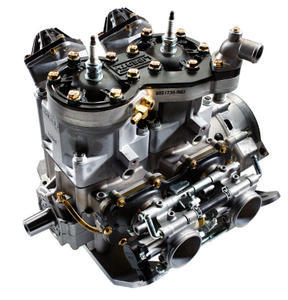 With Cleanfire injection, the Polaris 600 twin puts out 120-plus horsepower.
With Cleanfire injection, the Polaris 600 twin puts out 120-plus horsepower.
Obviously the 600 LX comes fitted with a Liberty 600 twin. The Polaris-engineered and built 2-stroke engine measures 77.2 mm for bore with a 64 mm stroke for an actual displacement of 599cc. The Liberty twin feeds fuel via twin injectors for very precise throttle action. We like the light throttle pull and quick response in this active trail luxury model. In the past few seasons Polaris has made its Liberty 600 twin the equal of Ski-Doo’s Rotax-built 600 twin. There’s really not a great deal of choice between these two engines in our estimation. We would expect the latest Rotax E-TEC version to get better fuel mileage, but overall performance should be pretty even if power-to-weight is close.
Clutching in this package is similar to the all-new 600 Rush. There’s a P85 driver and a P2 driven. Of course, the powertrain is tuned toward touring and less toward the high performance realm of the nearly 70-pounds lighter Rush. Performance is extremely good for this Polaris solo cruiser and you should have adequate power in hand for those long lake crossings.
As we noted earlier, the Polaris 600 LX surprised us. It is a very capable all-around snowmobile with very good performance, a supple ride, very good handling overall and all the added touches you expect from a “luxury” ride. If you like to pile up the miles and want a sporty, trail-friendly mount, you need to check out the Polaris 600 LX. It looks good on the showroom floor and will look even better out on the trail as a reliable, sporty, everyday cruiser.
| 2010 Polaris 600 LX Specs | |
| Engine | Polaris Liberty 599cc Cleanfire Injection-2; liquid-cooled two-stroke with electronic PERC reverse |
| Horsepower | 125 (estimated) |
| Drive | Polaris P-85 drive; P2 driven |
| Front Suspension | Polaris IQ; 10.0 inches maximum travel; RydeFX Pro gas shocks with internal floating pistons |
| Rear Suspension | Polaris IQ 136 Coupled Rear Suspension; 13.9-in of maximum travel; RydeFX gas shock on front arm; Fox PS5 gas shock on rear arm |
| Length | 115.0 in |
| Width | 48.0 in |
| Height | 48.5 |
| Ski Stance | 42.5 |
| Track | 15 x 136 x 1.00 Hacksaw |
| Brake | Polaris Phantom disc hydraulic |
| Weight | 526 lbs (claimed) |
| Fuel Capacity | 11.5 US Gal |
| Special Features | Multi-function instrumentation; rear storage bag; reverse; electric start; mirrors |
| MSRP | To be determined |
Related Reading
2009 Polaris FST IQ Touring Review
2009 Polaris Trail Touring DLX Review



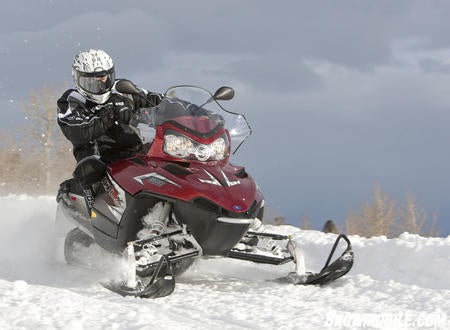
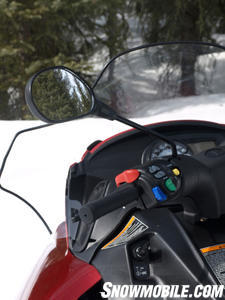
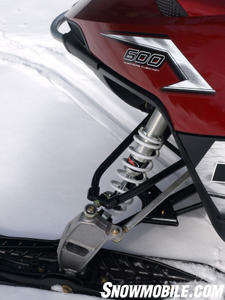
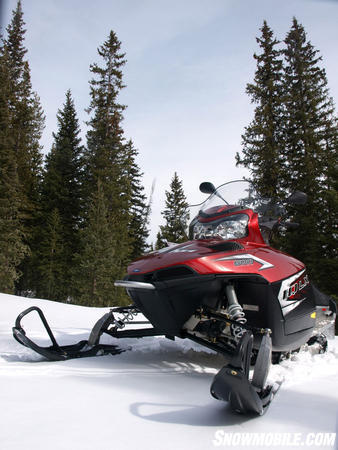
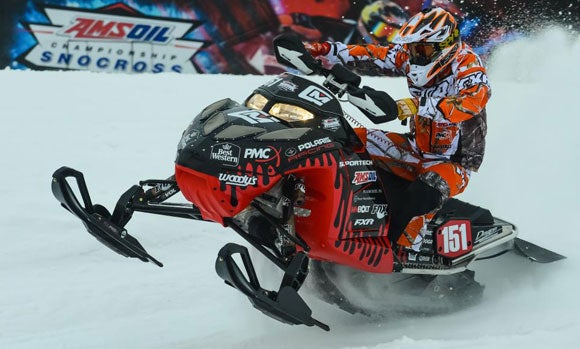
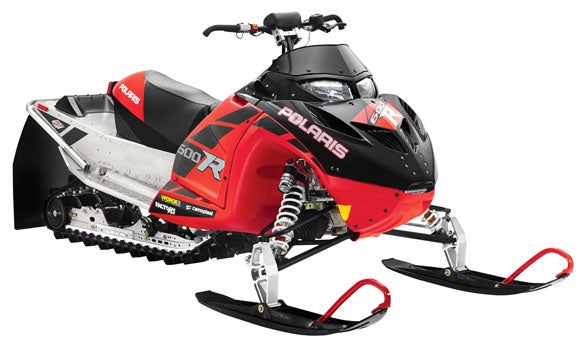
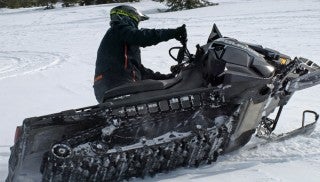


 Your Privacy Choices
Your Privacy Choices